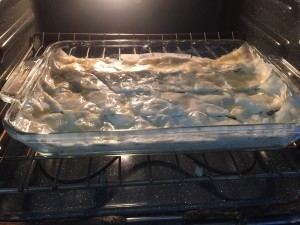Week 11: Sir Muhammad Iqbal and the Creation of Pakistan; the Iranian Revolution
During week 11 of class, we discussed how over the course of its history, the geographic area of present-day Iran once held the Safavid Dynasty, the Qajar Dynasty, Pahlavi Dynasty, and now the Islamic Republic of Iran (Lecture 4.14.16; Buchman 84). The changing political climate made me wonder about what may stay constant during that time, and I thought about food.
Food, to me, is like art. Just like a painting, the act and process of making food is cathartic. Consequently, I decided to make my artistic response to this particular class on Iran entail food. As Ram notes in his piece, “social upheavals and revolutionary struggles often give rise to innovative forms of political artistic expression,” and Chelkowski agrees, though he focuses on graphic arts (Ram 90; Chelkowski 132). Analyzing and understanding the upheavals that occurred in Iran’s history made me think of an innovative artistic response: food.

Therefore, for this week, I decided to make baklava, a traditional Iranian pastry that has been present in Iran despite the change in political climate. The process of making the baklava for me was quite cathartic: after placing each layer of filo dough, I brushed each pastry with butter, like paint on a canvas, until I completed that process with 40 layers. While I immersed myself in this pastry-making process, I thought about the women and men in Iran who make these pastries, and across diverse communities of interpretation in the Middle East, and what it may feel like for them to do so. Perhaps the act of creating the pastry was a way to relax from the tensions that existed in society. When the baklava had baked and came out of the oven, I poured the warm sugar water over it, after which the baklava made a sizzling noise in the sound scape of my kitchen. Despite using a different canvas, filo dough, this act of making baklava to me was truly cathartic and like art.

The process of creating this baklava made me wonder how sweetness brings the pastry together — and perhaps how this sweetness could have mitigated tensions in society and brought individuals together, despite the bitterness of the political climate in Iran. Further, it made me wonder how food, and art more generally, can be used as a tool for unity and peace across the world.
